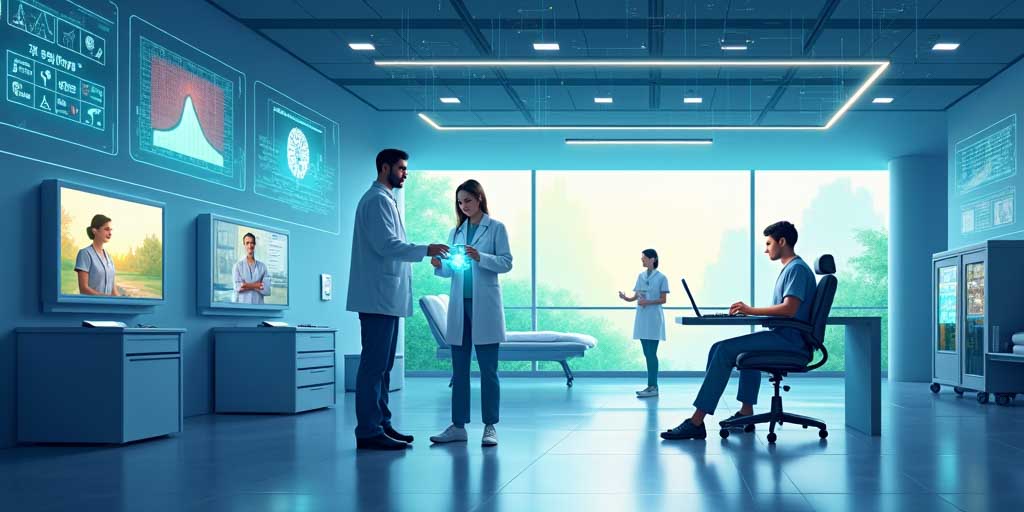Revolutionizing Patient Care: Essential 2025 Healthcare Trends to Watch
The healthcare industry is on the brink of a transformative era. As we approach 2025, several key trends are set to revolutionize patient care, driven by technological advancements, shifting patient expectations, and evolving healthcare policies. In this blog post, we’ll delve into the most significant trends that healthcare professionals, policymakers, and patients should keep an eye on. These trends not only forecast the future of healthcare but also suggest how stakeholders can prepare for the upcoming changes.
1. Telehealth: Expanding Reach and Accessibility
Telehealth has surged in popularity due to necessity during the COVID-19 pandemic, but it’s set to become a permanent fixture in healthcare provision. By 2025, telehealth services are expected to be more integrated into regular patient care, offering greater convenience and reducing the need for physical consultations. This shift is particularly beneficial for rural or underserved populations, who can receive high-quality care from specialists without the need to travel.
Example: Hospitals are increasingly adopting platforms that allow for video consultations, remote monitoring, and digital communication between patients and healthcare providers. This not only makes healthcare more accessible but also helps in managing chronic conditions and post-operative care more efficiently.
2. Artificial Intelligence and Machine Learning
Artificial Intelligence (AI) and Machine Learning (ML) are set to play pivotal roles in diagnostics, patient management, and personalized medicine. By analyzing vast amounts of data and recognizing patterns faster than humanly possible, these technologies can predict patient outcomes, recommend treatments, and optimize healthcare resources.
Example: AI-driven diagnostic tools, like those developed for detecting diabetic retinopathy and skin cancers, are becoming increasingly accurate, sometimes surpassing human experts in speed and precision. Furthermore, AI algorithms are being used to tailor drug therapies to individual genetic profiles, enhancing the efficacy of treatments.
3. Wearable Health Technology
Wearable technology has moved beyond fitness tracking to become crucial in chronic disease management and preventive healthcare. By 2025, wearables are expected to be more sophisticated, capable of tracking a wider range of health indicators like blood glucose levels, respiratory rates, and even early signs of infections.
Example: Companies like Fitbit and Apple are continuously refining their devices to offer more health monitoring features, which can transmit real-time data to healthcare providers. This ongoing monitoring can lead to earlier intervention and better management of conditions such as heart disease and diabetes.
4. Blockchain for Health Data Security
As digital health data becomes more prevalent, securing this data becomes increasingly critical. Blockchain technology offers a promising solution to this challenge by providing a secure, decentralized, and tamper-proof repository for health records, ensuring patient privacy and data integrity.
Example: Blockchain can enable patients to control who accesses their health data while ensuring that the data across health systems is consistent and up-to-date. This technology can also facilitate faster and more secure insurance claims processing and health data exchanges across providers.
5. 3D Printing in Healthcare
3D printing technology is set to broaden its applications in healthcare, including the creation of customized prosthetics, implants, and even human tissues. By 2025, 3D printing could significantly reduce the costs of these medical necessities and increase the customization options available to patients.
Example: Researchers are already exploring bioprinting, where biological materials are used to print organs and tissue structures. This could eventually lead to a reduction in organ transplant waitlists and more personalized and compatible healthcare solutions.
6. Virtual Reality for Patient Education and Rehabilitation
Virtual Reality (VR) technology is not just for gaming. In the healthcare sector, it’s being used for therapeutic purposes and patient education. By 2025, VR could become a common tool for physical rehabilitation, mental health therapy, and surgical training.
Example: VR applications can simulate environments for patients to safely manage anxiety disorders or phobias. Additionally, VR can help stroke victims regain motor control by engaging them in virtual activities that promote neural recovery.
7. Healthcare Policy Innovations
With all these technological advancements, healthcare policies must evolve accordingly. Changes in regulations and funding will likely focus on supporting digital health technologies, protecting patient data, and ensuring equitable access to healthcare innovations.
Example: Governments and health organizations might introduce new guidelines for telehealth, incentivize the adoption of AI in hospitals, or fund research into secure blockchain health systems.
Conclusion
As we look towards 2025, the healthcare industry is positioned to undergo significant transformations that promise to enhance patient care, improve health outcomes, and make healthcare more accessible. Whether it’s through AI in diagnostics, VR in therapy, or blockchain in data security, these advancements will shape the future of healthcare. Stakeholders must stay informed and adaptable to harness these trends effectively, ensuring that the benefits of technology-driven healthcare are realized across the board.
